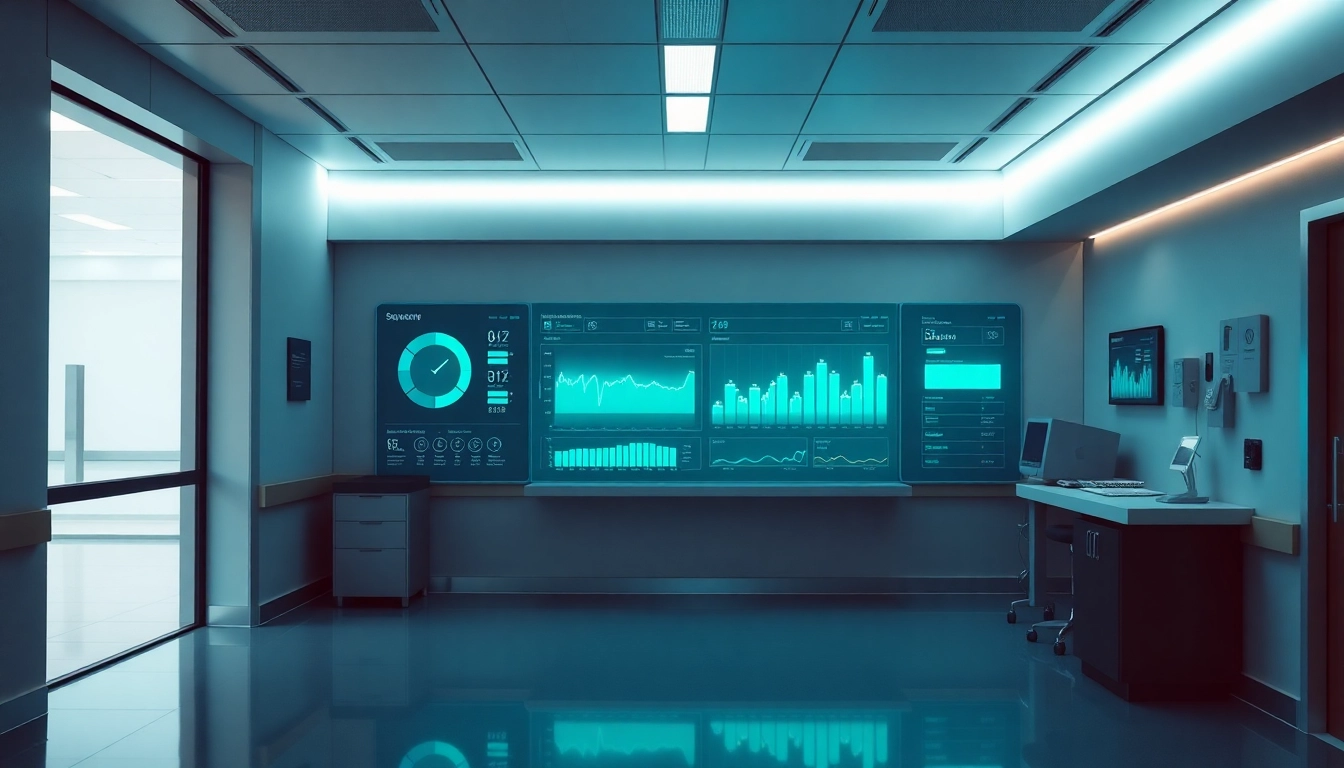Introduction to Informatics
In the era of technology-driven health care, the field of informatics has emerged as a pivotal force in improving the delivery of health services and patient care. But what exactly is informaticsview.com and how does it relate to the broader domain of informatics? At its core, informatics encompasses the science of using data, information, and knowledge to foster improvements in health care. This encompasses a variety of disciplines that engage with data management, technology application, and a focus on patient care improvements, creating a bridge between clinical practice and information technology.
What is Informatics?
Informatics is defined as the study, design, development, and application of methods for efficient information handling. According to the ACM Europe Council and Informatics Europe, it is synonymous with computer science but specific to the transformation of information. Within health care, informatics provides both practitioners and researchers the tools to analyze health data efficiently, enabling them to derive insights that can lead to enhanced patient outcomes.
The Role of Informatics in Healthcare
The role of informatics in healthcare is multifaceted, contributing to various areas such as clinical practice, public health, health education, and health policy. For instance, informatics utilizes advanced computational techniques to manage Electronic Health Records (EHRs), facilitating better communication among health professionals and thus enhancing patient care. The systematic application of informatics also supports healthcare providers in clinical decision-making by integrating guidelines and protocols into EHR systems, streamlining workflows, and ensuring compliance with best practices.
Importance of informaticsview.com in Modern Practices
informaticsview.com serves as an essential resource in this rapidly evolving field, providing updates on the latest trends, research, and innovations related to health informatics. The platform not only assists health professionals in navigating the complexities of health data but also fosters a community of knowledge sharing, learning, and capacity building across various health informatics disciplines.
Core Components of Health Informatics
Data Management and Interoperability
Effective data management and interoperability are foundational to health informatics. As health systems generate vast amounts of data, the need for robust data management practices becomes crucial. This includes the capture, storage, and retrieval of data in a way that is secure and accessible. Interoperability, which refers to the ability of disparate health IT systems to communicate and exchange data, is critical in achieving seamless healthcare delivery.
One of the approaches to achieving interoperability is through standardized data formats and protocols, such as HL7 and FHIR (Fast Healthcare Interoperability Resources), which facilitate the exchange of health information. Moreover, effective data management strategies ensure that patient data can be integrated into decision-making processes, enhancing the overall quality of care.
Health Information Technology Systems
At the heart of health informatics are health information technology (health IT) systems. These systems encompass a variety of technologies, including EHRs, laboratory information systems, and telemedicine platforms. A well-designed health IT system improves the efficiency of health care delivery by streamlining data workflow, enhancing communication among health care providers, and ensuring the accuracy of patient records.
For example, telehealth platforms enable remote consultations between patients and healthcare providers, thereby expanding access to care and reducing patient wait times. By integrating health IT systems into routine practice, healthcare organizations can optimize their operations and deliver high-quality patient care.
Patient-Centric Informatics
Patient-centric informatics refers to the design and implementation of informatics tools that prioritize the needs and preferences of patients. This approach necessitates the active involvement of patients in their own healthcare decisions, facilitated by tools such as patient portals and health apps that provide access to personal health information, educational resources, and communication channels with healthcare providers.
The shift toward patient-centric informatics is underscored by the increasing emphasis on shared decision-making. Empowering patients with information equips them to participate actively in their care journey, leading to improved health outcomes and patient satisfaction.
Applications and Benefits of Informatics
How Informatics Improves Patient Care
The applications of informatics in healthcare are vast and varied, yielding numerous benefits for patient care. One of the most significant advantages is the ability to leverage data analytics for population health management. By analyzing health data at a population level, healthcare organizations can identify trends, disparities, and areas for intervention, leading to improved preventative care strategies.
Moreover, informatics plays a critical role in enhancing clinical workflows, minimizing errors, and improving health care outcomes. Clinical Decision Support Systems (CDSS) are excellent examples of how informatics provides clinicians with evidence-based recommendations at the point of care. This not only aids in clinical decision-making but also supports adherence to best practices and reduces variability in care.
Innovative Care Solutions from informaticsview.com
As a dedicated platform for advancing health informatics knowledge and resources, informaticsview.com showcases innovative solutions that epitomize the application of informatics concepts. This may include case studies detailing the successful implementation of EHRs, telehealth services, and analytics platforms that have transformed care delivery in specific settings. Through its comprehensive resources, the site serves as a blueprint for organizations looking to adopt informatics solutions effectively.
Case Studies: Successful Implementations
To illustrate the practical benefits of informatics, several case studies can be highlighted. One notable example is the implementation of an integrated EHR system in a large hospital network, which resulted in reduced medication errors by 30%, improved patient satisfaction scores, and streamlined workflows across departments.
Another exemplary case is the use of telehealth services during the COVID-19 pandemic, which enabled hospitals to maintain patient care continuity while minimizing the risk of viral transmission. These implementations not only demonstrate the critical importance of informatics in overcoming significant health challenges but also underscore the transformative potential of technology in healthcare.
Challenges in Health Informatics
Data Privacy and Security Issues
While the benefits of health informatics are substantial, it is imperative to address the inherent challenges, particularly those related to data privacy and security. The increasing digitization of health records raises concerns about the confidentiality and security of sensitive patient information. Data breaches and cyber-attacks have become prevalent, thereby necessitating stringent security measures and compliance with regulations like the Health Insurance Portability and Accountability Act (HIPAA).
Coping strategies include implementing robust encryption technologies, conducting regular security audits, and fostering a culture of data security awareness among staff. Moreover, adopting a proactive approach to risk management helps healthcare organizations mitigate potential vulnerabilities and safeguard their information systems.
Overcoming Resistance to Change
Resistance to change is a common hurdle in the adoption of informatics in healthcare settings. Many professionals may be hesitant to embrace new technologies due to concerns about workflow disruptions, inadequate training, or even skepticism regarding the efficacy of new solutions. It is crucial for organizations to engage all stakeholders early in the implementation process, emphasizing the long-term benefits of informatics solutions.
Structured change management strategies, including tailored training programs and continuous support, can ease the transition process. By addressing user concerns and providing individualized support, health organizations can facilitate smoother adoption of informatics practices and technologies.
Future Challenges for informaticsview.com
As health informatics evolves, informaticsview.com faces its set of challenges, particularly in maintaining relevance in an ever-changing landscape. The rapid pace of technological advancements demands ongoing updates to the platform’s resources, ensuring that health professionals are equipped with the latest insights and tools.
Moreover, adapting to new regulations and standards, such as changes to patient privacy laws and health IT interoperability requirements, presents a continuous challenge. Robust strategies for audience engagement, including user feedback mechanisms, will be essential to overcome these hurdles, ensuring the platform remains a trusted resource for health informatics professionals.
The Future of Informatics in Healthcare
Trends Shaping Health Informatics
The future of health informatics is poised to be shaped by several emerging trends that promise to transform healthcare delivery. Artificial intelligence (AI) and machine learning are at the forefront of this evolution, as they enable predictive analytics and personalized medicine, allowing clinicians to tailor treatment strategies based on individual patient profiles.
Moreover, the integration of wearable technology and mobile health applications is enhancing patient monitoring capabilities, empowering patients to take a more active role in managing their health. These advancements not only pave the way for improved health outcomes but also increase patient engagement and satisfaction.
Technological Innovations and informaticsview.com
Informaticsview.com must stay ahead of technological innovations to provide relevant content and resources. The rise of blockchain technology offers exciting possibilities for data integrity, enhances the security of patient records, and facilitates the secure sharing of health data across platforms without compromising privacy. Additionally, advancements in cloud computing are transforming the scalability and accessibility of health informatics solutions, enabling organizations of all sizes to implement robust systems.
By leveraging these innovations, informaticsview.com can position itself as a thought leader in the field, offering expert insights and resources that address the needs of health professionals navigating the digital landscape.
Preparing for a Data-Driven Future
As the health sector moves toward a more data-driven approach, preparing for this shift is paramount. Organizations must invest in training and education for their staff, ensuring they possess the skills necessary to utilize data effectively. This encompasses not only technical skills but also the ability to interpret data insights for enhanced patient care and operational efficiency.
Furthermore, fostering a culture of data literacy within healthcare organizations will be essential for maximizing the potential of health informatics. By embracing a data-driven mindset, organizations can harness the power of analytics to transform patient care and outcomes convincingly.



